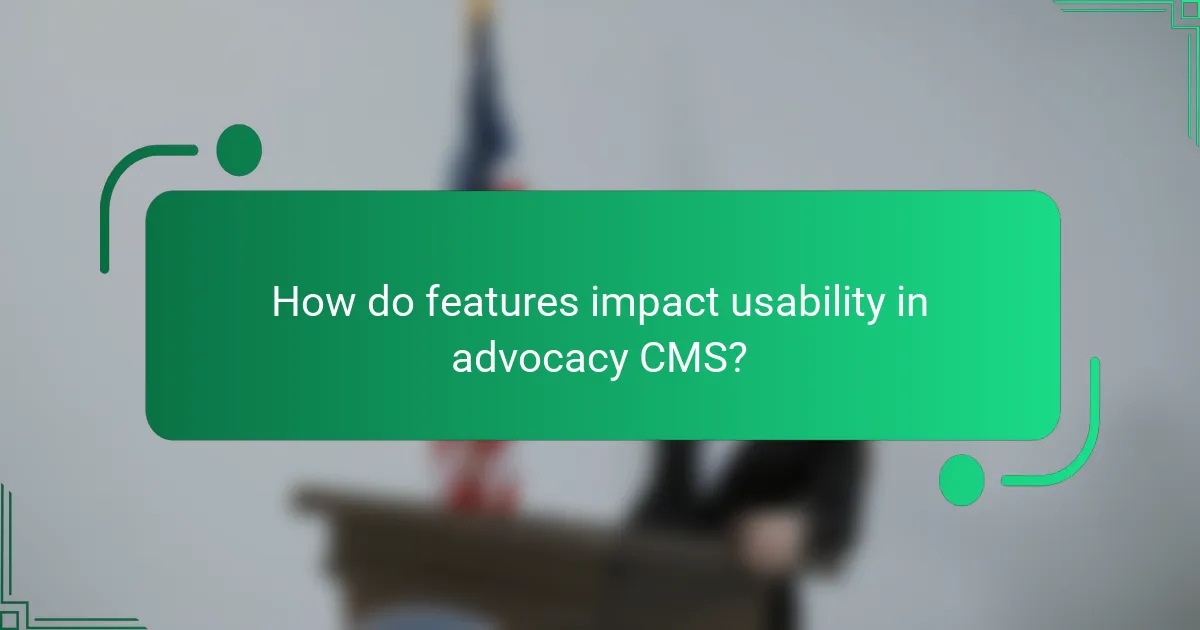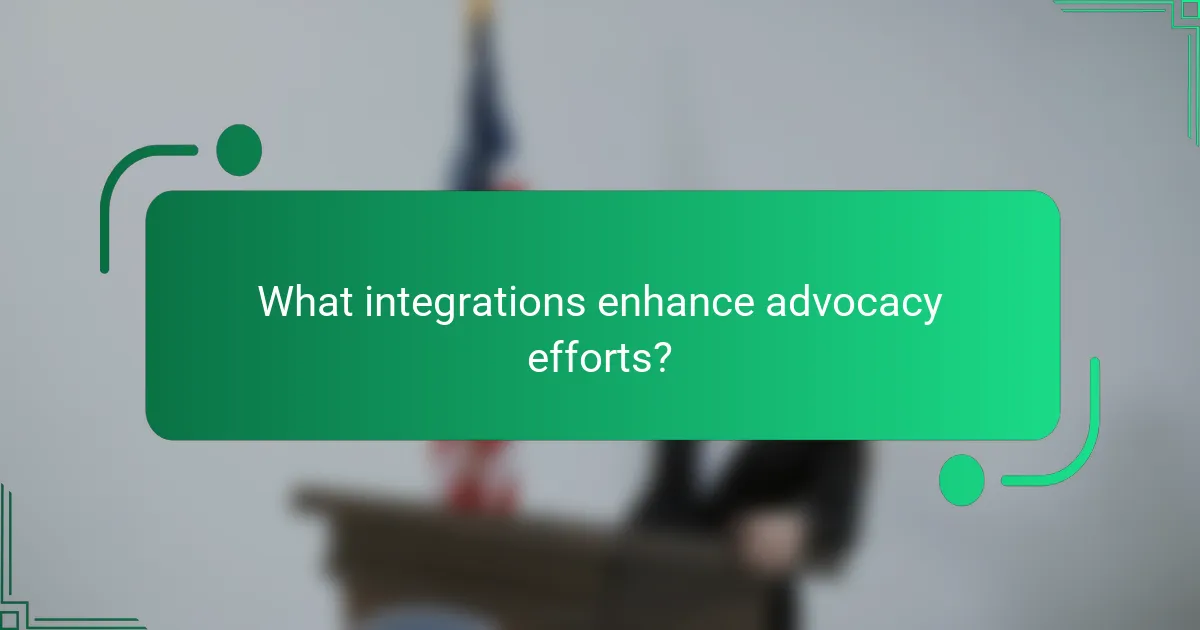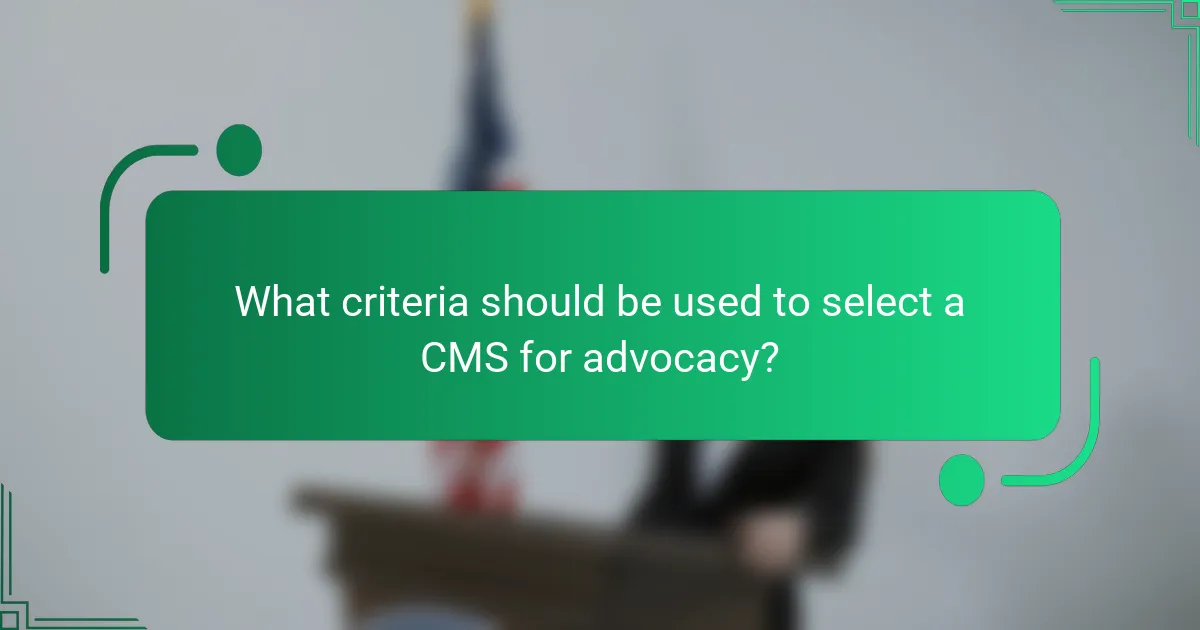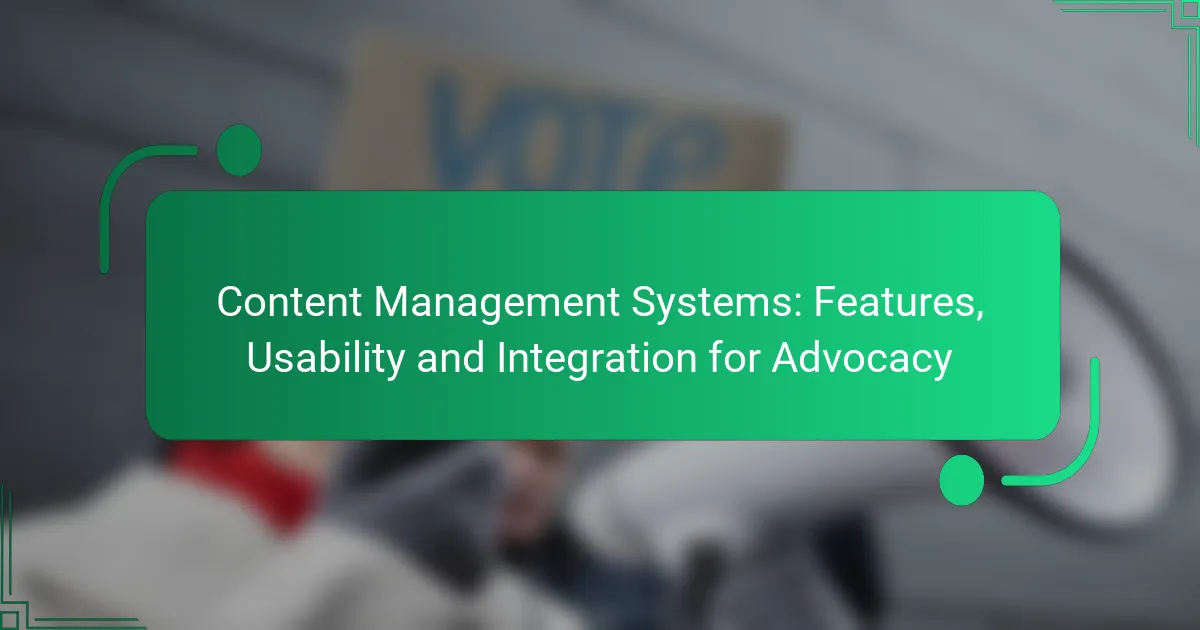Content management systems (CMS) play a crucial role in empowering advocacy organizations by offering essential features that enhance usability and integration. With options like WordPress, Drupal, and Squarespace, these platforms provide tailored solutions to meet diverse advocacy needs. By prioritizing user-friendly design and effective integration tools, a robust CMS can significantly streamline content creation and improve audience engagement.

What are the best content management systems for advocacy?
The best content management systems (CMS) for advocacy organizations prioritize usability, flexibility, and integration capabilities. Key options include WordPress, Drupal, Joomla, Wix, and Squarespace, each offering unique features suited for various advocacy needs.
WordPress for Advocacy
WordPress is a popular choice for advocacy due to its user-friendly interface and extensive plugin ecosystem. It allows organizations to easily create and manage content, engage with supporters, and optimize for search engines.
Consider using plugins like GiveWP for fundraising or The Events Calendar for managing events. WordPress’s flexibility makes it suitable for both small grassroots organizations and larger nonprofits.
Drupal for Nonprofits
Drupal is known for its robust security and scalability, making it ideal for larger advocacy groups with complex needs. It offers advanced customization options, allowing organizations to tailor their websites to specific audiences.
However, Drupal has a steeper learning curve compared to other CMS options. Organizations should ensure they have the technical expertise or support to manage and maintain their Drupal site effectively.
Joomla for Community Engagement
Joomla strikes a balance between ease of use and flexibility, making it suitable for community-focused advocacy. It features strong user management capabilities, allowing organizations to create tailored experiences for different user groups.
Joomla’s built-in multilingual support is beneficial for organizations operating in diverse linguistic regions. This feature helps reach a broader audience and engage more effectively with various communities.
Wix for Quick Setup
Wix is an excellent option for organizations needing a quick and visually appealing website. Its drag-and-drop interface allows users to create professional-looking sites without any coding knowledge.
While Wix is easy to set up, it may lack some advanced features needed for larger advocacy campaigns. Organizations should evaluate whether its capabilities align with their long-term goals.
Squarespace for Visual Appeal
Squarespace is renowned for its stunning design templates, making it ideal for advocacy groups focused on visual storytelling. It offers built-in tools for blogging, e-commerce, and analytics, providing a comprehensive platform for engagement.
However, Squarespace can be less flexible than other CMS options when it comes to customization. Organizations should assess their design needs and whether the available templates meet their advocacy objectives.

How do features impact usability in advocacy CMS?
Features significantly influence the usability of advocacy content management systems (CMS) by determining how easily users can create, manage, and distribute content. A well-designed CMS with the right features enhances user experience, making it simpler for advocacy organizations to engage their audience effectively.
User-friendly Interfaces
User-friendly interfaces are crucial for advocacy CMS as they allow users to navigate the system with ease. Intuitive layouts, clear menus, and straightforward workflows reduce the learning curve, enabling staff and volunteers to focus on content rather than technical issues. Look for systems that offer drag-and-drop functionality and customizable dashboards to streamline user interactions.
Customizable Templates
Customizable templates empower advocacy organizations to maintain brand consistency while saving time on content creation. A good CMS should provide a variety of templates that can be tailored to specific campaigns or messages, allowing users to quickly adapt their content for different platforms. Ensure the templates are flexible enough to accommodate various media types, such as images, videos, and social media posts.
Mobile Responsiveness
Mobile responsiveness is essential for advocacy CMS, as many users access content via smartphones and tablets. A responsive design ensures that websites and content display correctly on all devices, enhancing user engagement and accessibility. Test the CMS on multiple devices to confirm that it maintains functionality and aesthetics across different screen sizes.
SEO Optimization Tools
SEO optimization tools within an advocacy CMS help improve the visibility of content in search engine results. Features such as keyword suggestions, meta tag management, and analytics integration allow organizations to optimize their content effectively. Choose a CMS that offers built-in SEO tools to streamline the process and ensure your advocacy messages reach a wider audience.

What integrations enhance advocacy efforts?
Integrations that enhance advocacy efforts include tools that streamline communication, manage relationships, and facilitate donations. Effective integration can significantly improve outreach and engagement, making it easier for organizations to mobilize support and resources.
Social Media Integration
Social media integration allows advocacy organizations to connect with their audience on platforms like Facebook, Twitter, and Instagram. By linking content management systems with social media accounts, organizations can automate posting, track engagement, and analyze audience interactions.
Consider using tools like Hootsuite or Buffer, which enable scheduling and monitoring across multiple platforms. This can save time and ensure consistent messaging, but be cautious of over-posting, which can lead to audience fatigue.
Email Marketing Tools
Email marketing tools are essential for advocacy campaigns, allowing organizations to communicate directly with supporters. Integrating platforms like Mailchimp or Constant Contact can help manage subscriber lists, segment audiences, and automate email campaigns.
Effective email strategies often include personalized content and clear calls to action. Avoid sending too many emails in a short period, as this can lead to unsubscribes and reduced engagement.
CRM Systems like Salesforce
Integrating a Customer Relationship Management (CRM) system like Salesforce can enhance advocacy efforts by providing a centralized database for managing supporter relationships. This integration helps track interactions, donations, and volunteer activities, enabling organizations to tailor their outreach.
When implementing a CRM, ensure proper training for staff to maximize its potential. Regularly updating data and maintaining accurate records are crucial for effective relationship management.
Payment Processing Solutions
Payment processing solutions are vital for advocacy organizations that rely on donations. Integrating platforms like PayPal or Stripe allows for secure and efficient transaction handling, making it easier for supporters to contribute financially.
Consider offering multiple payment options to accommodate different preferences. Ensure compliance with local regulations regarding online payments to build trust and facilitate smooth transactions.

What criteria should be used to select a CMS for advocacy?
Selecting a content management system (CMS) for advocacy involves evaluating several key criteria to ensure it meets your organization’s needs. Focus on budget, technical support, and scalability to facilitate effective advocacy efforts.
Budget Considerations
Budget is a critical factor when choosing a CMS for advocacy. Costs can vary widely, from free open-source options to premium solutions that may charge monthly or annual fees ranging from a few hundred to several thousand dollars.
Consider not only the initial purchase price but also ongoing costs such as hosting, maintenance, and potential add-ons. It’s essential to assess the total cost of ownership to avoid unexpected expenses down the line.
Technical Support Availability
Technical support is vital for ensuring your CMS runs smoothly, especially during critical advocacy campaigns. Look for providers that offer responsive customer service, including live chat, email, or phone support.
Evaluate the availability of resources such as documentation, forums, and community support. A CMS with robust technical support can save time and frustration, allowing your team to focus on advocacy rather than troubleshooting.
Scalability for Growth
Scalability is important for advocacy organizations that anticipate growth or increased engagement. Choose a CMS that can handle a growing volume of content, users, and traffic without compromising performance.
Check if the CMS can easily integrate with additional tools or features as your needs evolve. A scalable solution will help ensure that your advocacy efforts can expand effectively without requiring a complete system overhaul.
